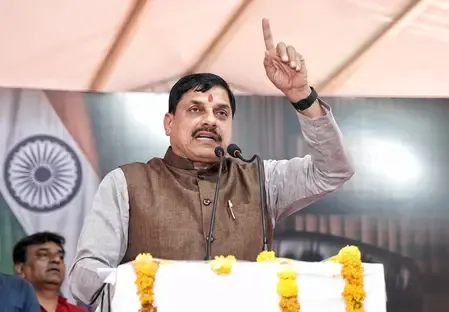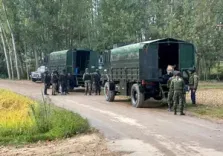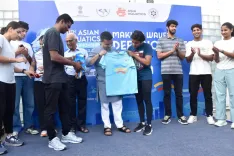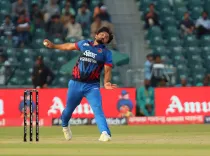Will the Parvati-Kalisindh-Chambal River Linking Project Transform Water Access?

Synopsis
Key Takeaways
- Investment of Rs 75,000 crore for water sustainability.
- Beneficial for 1.5 crore people across Madhya Pradesh and Rajasthan.
- 21 dams and reservoirs planned for enhanced water management.
- 6.11 lakh hectares of land targeted for irrigation improvements.
- Collaboration between state governments and the Union government.
Gwalior, May 4 (NationPress) Energized by the approval of the Ken-Betwa river linking initiative, Madhya Pradesh is set to advance the significant Parvati-Kalisindh-Chambal River Linking Project, a collaborative effort between Madhya Pradesh and Rajasthan. This project aims to significantly enhance water availability and represents a pivotal shift towards ensuring irrigation, drinking water, and industrial resources across essential areas.
While addressing an audience in Gwalior during an agricultural university event honoring India's Vice President Jagdeep Dhankhar, Chief Minister Dr. Mohan Yadav discussed the historical disputes that have slowed the project's momentum. He compared the tensions between the two states to those between India and Pakistan, blaming delays on the previous Congress government in Rajasthan for its hesitance to progress beyond initial planning stages.
Promising timely execution, Dr. Yadav reiterated his dedication to completing the project, mentioning that both states would cover only 5 percent of the total expenses. He stated, “The project will start taking shape soon.”
With an estimated budget of Rs 75,000 crore, the project is anticipated to benefit countless families by ensuring sustainable access to irrigation, drinking water, and industrial supplies.
Spanning across 6.11 lakh hectares, it will allocate 172 million cubic meters of water across various regions in both states. Key beneficiaries will include the districts of Morena, Gwalior, Shivpuri, Guna, Bhind, Sheopur, Indore, Ujjain, Dhar, Agar-Malwa, Shajapur, Dewas, and Rajgarh in Madhya Pradesh.
In addition to agricultural benefits, the project is set to stimulate industrial growth in major urban areas and promote tourism and religious activities in regions facing water shortages.
A significant milestone was achieved with the signing of a memorandum of understanding between Chief Minister Dr. Mohan Yadav, Rajasthan Chief Minister Bhajan Lal Sharma, and the Secretary of the Union Jal Shakti Ministry, Debashree Mukherjee, last year. This was followed by an agreement on January 28, 2024, with the Union Jal Shakti Minister and the chief ministers of both states overseeing the detailed project report preparations.
The core plan involves constructing 21 dams, barrages, and reservoirs, alongside modernizing the Chambal Right Main Canal to enhance irrigation in Sheopur, Morena, and Bhind. Backed by the central government, this initiative aims for completion within five years, as noted by Dr. Yadav. The project intends to maximize water resource utilization from Parvati, Kuno, Kalisindh, Chambal, Kshipra, and other tributaries originating in Madhya Pradesh.
To accelerate progress, the state has updated the draft agreement for the Parvati-Kalisindh-Chambal Link Project cum East Rajasthan Canal Project and submitted it to the Government of India on October 25, 2024, seeking the inclusion of specific work points.
Dr. Yadav highlighted the project’s critical role in improving the lives of 1.5 crore people, tackling vital socio-economic issues such as poverty, unemployment, and illiteracy, while enhancing living conditions across impacted areas. With 5.60 lakh hectares designated for irrigation and new reservoirs expected to elevate groundwater levels, the initiative stands as a beacon of development and sustainability for western Madhya Pradesh.







